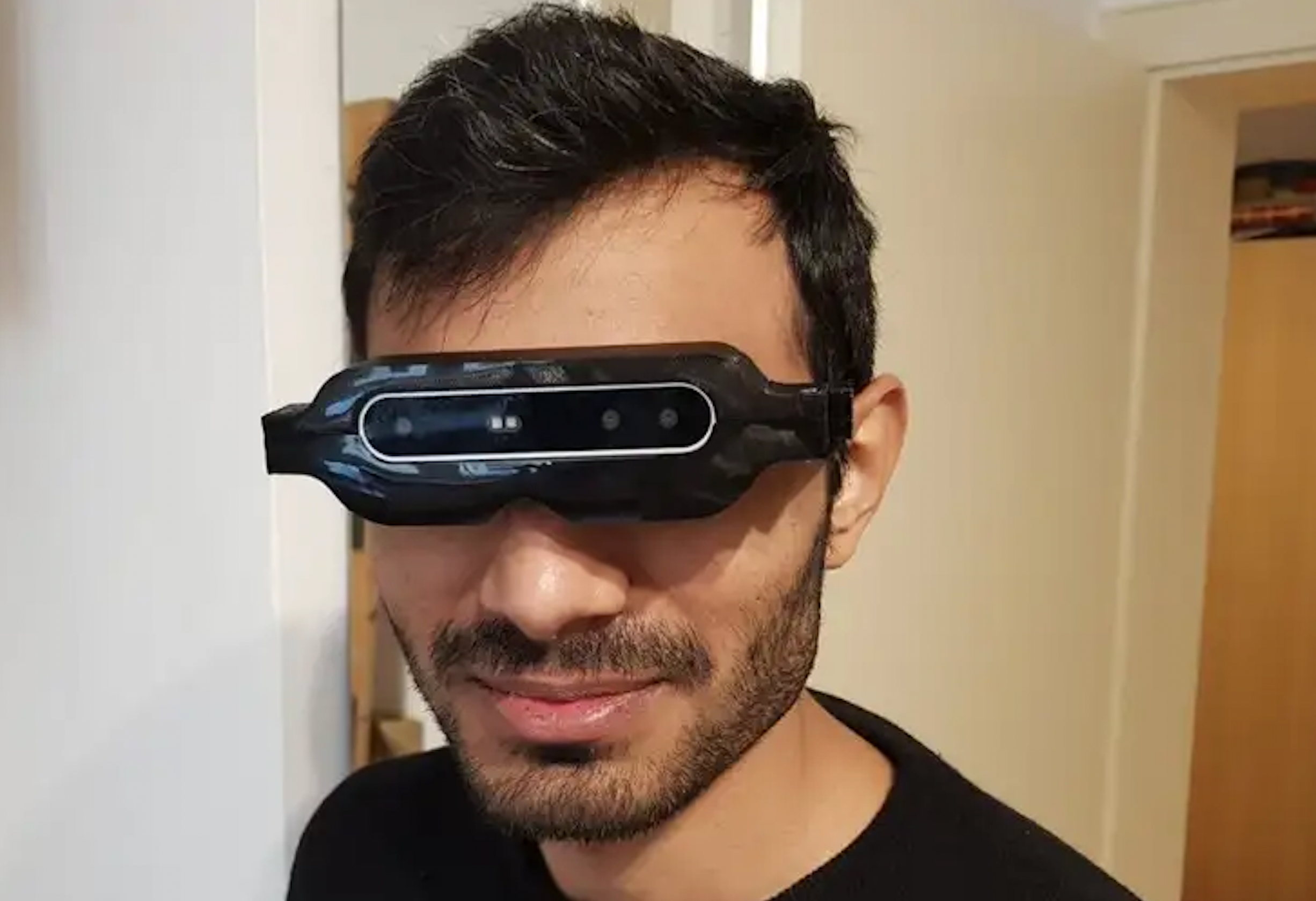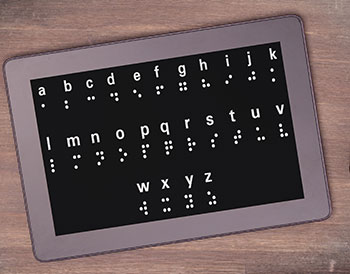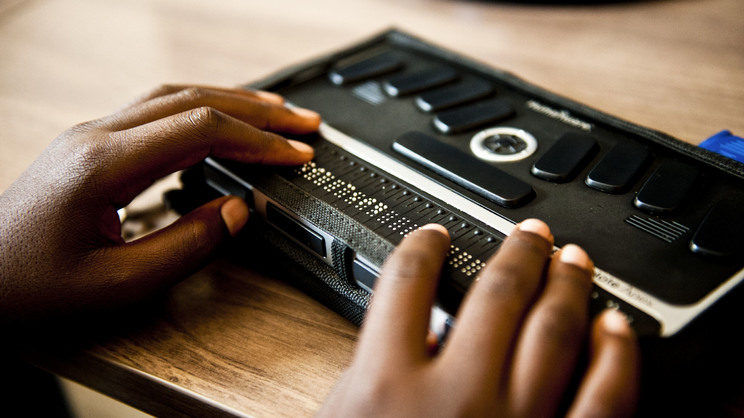Smart Glasses for the Visually Impaired: Innovations in Vision Support
Smart Glasses for the Visually Impaired: Innovations in Vision Support
Blog Article
Discover Innovative Tools Created for the Visually Impaired
The growth of innovative tools for the visually impaired represents a substantial improvement in availability and self-reliance. Technologies such as wise glasses with AI abilities and mobile applications designed to offer acoustic summaries are improving everyday experiences for users. In addition, wearable devices that employ haptic responses improve environmental understanding, while modern Braille developments offer new means to engage with message. As these devices remain to evolve, their effect on the lives of those with visual problems elevates important concerns regarding the future of inclusivity and autonomy in different elements of life. What lies ahead in this technological landscape?
Smart Glasses for Navigating

Smart glasses created for navigation are reinventing the method aesthetically impaired individuals communicate with their atmosphere. These sophisticated tools use a combination of video camera innovation, expert system, and acoustic responses to give real-time details regarding surroundings. By utilizing challenge detection systems, smart glasses can inform customers to possible hazards, allowing more secure flexibility in both familiar and unknown setups.
The assimilation of GPS modern technology better boosts navigating capabilities, enabling users to get auditory directions as they move. This hands-free method not just fosters independence yet additionally equips visually damaged people to navigate metropolitan landscapes with raised confidence. In addition, lots of clever glasses are equipped with attributes that identify spots and road signs, providing contextual details that improves the user experience.
Moreover, the development of these devices is continually advancing, with companies functioning to improve the accuracy of things acknowledgment and broaden the variety of navigational features. As smart glasses become a lot more budget friendly and obtainable, they hold the potential to significantly change everyday life for aesthetically impaired users. Eventually, these ingenious devices stand for an important action toward inclusivity, offering boosted wheelchair and a higher sense of autonomy for people navigating the world around them.

Mobile Application for Daily Living
Just how can mobile applications improve the every day lives of visually impaired individuals? Mobile apps are changing the method aesthetically impaired individuals navigate their settings, take care of daily tasks, and gain access to info. These applications provide essential assistance through numerous functionalities, cultivating self-reliance and improving lifestyle.
Several ingenious mobile applications are designed especially for everyday living. Applications like Be My Eyes connect aesthetically damaged individuals with sighted volunteers through video telephone calls, allowing them to get real-time help with tasks such as reading tags or browsing strange spaces. Seeing AI, developed by Microsoft, uses man-made knowledge to define environments, reviewed text, and identify things, effectively changing a smart device into a powerful device for daily support.
Furthermore, navigation applications customized for the aesthetically damaged, such as Aira and BlindSquare, provide audio-based directions and ecological information, making it possible for individuals to traverse their surroundings securely and confidently. Past navigating and immediate assistance, mobile applications additionally support company and task administration, with functions that aid customers establish pointers, develop order of business, and track appointments. In summary, mobile applications work as indispensable sources, encouraging aesthetically impaired individuals to lead even more independent and meeting lives.
Wearable Technologies for Help
Empowerment with innovation is progressively obvious in the realm of wearable devices designed to assist aesthetically damaged individuals. These ingenious tools incorporate seamlessly right into day-to-day live, boosting navigation and supplying crucial comments to individuals. As an example, smart glasses outfitted with cameras can check out and identify faces message out loud, permitting individuals to engage more with confidence in professional and social settings.
One more Visit Your URL noteworthy improvement is using haptic comments systems in wearable tools. These systems utilize vibrations or various other responsive signals to share details concerning the individual's setting, such as obstacles or adjustments in surface, improving flexibility and safety and security. Wearable modern technologies additionally include wristbands that link to smart devices, alerting individuals to alerts through refined resonances, therefore enhancing connectivity without dependence on visual hints.
As these modern technologies remain to develop, they are not only boosting self-reliance for aesthetically impaired people yet likewise promoting a higher sense of incorporation in society. By bridging the space between difficulties faced in daily living and the capacity for freedom, wearable technologies serve as pivotal tools in the mission for equality and empowerment for those with aesthetic disabilities.
Sound Description Devices
Audio description devices play a critical duty in improving availability for visually damaged people, giving them with the capacity to engage with visual media. Braille displays and notetakers. These devices supply narrated summaries of essential aesthetic elements in films, television shows, and live performances, guaranteeing that individuals can completely comprehend the context and emotions communicated via visuals
Audio description can be incorporated right into various platforms, including streaming services, cinema screenings, and live movie theater. Numerous prominent streaming solutions currently consist of audio summary as an access function, permitting visitors to pick it quickly. Along with mainstream media, specialized apps additionally exist, supplying audio descriptions for art exhibitions, museums, and other social events.
The effectiveness of audio summary pivots on the skill of the storytellers, who must share aesthetic information succinctly without interfering with the original sound. Innovations in this field are also leading the way for even more personalized experiences, where customers can change the level of information and pacing according to their choices.
Braille Innovations and Devices
Braille innovations and tools have substantially transformed the way aesthetically impaired people engage with message and information. Modern advancements have caused the growth of versatile tools that improve literacy and freedom among customers. Notably, Braille present innovations have developed, enabling dynamic analysis experiences. These gadgets convert electronic text into Braille, allowing individuals to access a vast variety of information on computer systems, smartphones, and tablets.
Moreover, portable Braille notetakers combine conventional Braille input with contemporary performances, assisting in note-taking, scheduling, and file modifying on the move. Screen readers for the blind. These portable devices often feature text-to-speech capabilities, connecting the space between Braille and acoustic information
On top of that, cutting-edge Braille printers have arised, permitting customers to produce Braille tags, records, and academic products effectively. This ease of access promotes greater involvement in specialist and instructional settings, ultimately advertising inclusivity.
Furthermore, research into smart Braille technologies remains to broaden. Tools that include expert system are being explored to give real-time navigating aid and contextual information, improving the customer eye test appointment experience in varied setups. Generally, these developments reflect a dedication to empowering aesthetically impaired individuals with modern technology, guaranteeing they can conveniently access and engage with the globe around them.

Final Thought
The development of ingenious tools for the aesthetically impaired dramatically boosts self-reliance and quality of life. These modern technologies not just foster higher addition but likewise promote freedom in everyday tasks, ultimately adding visit to a more equitable and obtainable culture for visually damaged people.
As clever glasses become much more budget friendly and obtainable, they hold the prospective to considerably transform everyday life for visually damaged individuals. Mobile applications are revolutionizing the method aesthetically damaged users navigate their settings, handle daily jobs, and gain access to details. Applications like Be My Eyes connect aesthetically impaired customers with sighted volunteers by means of video calls, allowing them to receive real-time help with jobs such as checking out tags or browsing strange rooms.Additionally, navigating apps tailored for the visually damaged, such as Aira and BlindSquare, provide audio-based directions and ecological info, allowing individuals to traverse their environments safely and with confidence.The advancement of cutting-edge devices for the aesthetically damaged significantly boosts independence and top quality of life.
Report this page